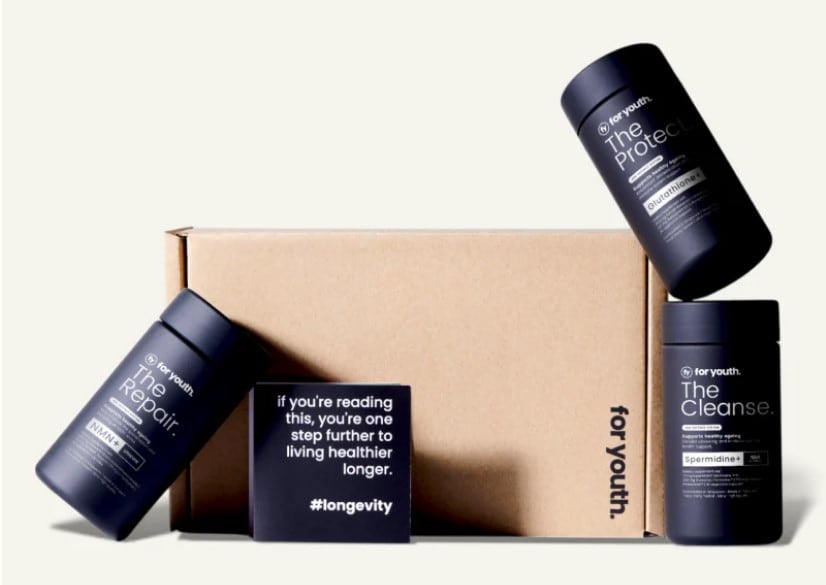The French skincare and cosmetics giant is interested in oral supplements that target hallmarks of ageing - such as mitochondrial dysfunction and cellular senescence.
The company recently announced its partnership with Swiss biotech firm Timeline that is behind Mitopure - a proprietary urolithin A supplement.
The partnership, for example, will be targeting mitochondrial dysfunction.
Beyond this particular partnership, L’Oréal is still on track in evaluating further opportunities in bringing supplements as a complimentary approach for addressing skin and hair ageing.
Speaking to NutraIngredients-Asia on the sidelines of Founders Longevity Forum held in Singapore, Luc Aguilar, R&D director – Microbiome, Exposome and Longevity Domains, L’Oréal, talked about the main goals and key criteria in evaluating opportunities for including oral supplements into its portfolio.
“Our main business today is targeting the features of ageing - skin and hair ageing,” he said.
During his presentation titled “Skin Longevity: A New Paradigm for Beauty” at the Founders Longevity Forum, he pointed out that the skin as an organ is affected by three key factors.
They are external factors such as ultraviolet A (UVA) radiation and pollution, lifestyle factors such as stress, and internal factors.
As such, the approach to addressing the root cause of skin and hair ageing will be an integrative one, he said.
This means that topical products, devices and supplements would be included as part of a holistic approach.
“There are many supplements on the market and we need to be sure that we are providing an added value with the supplement that we are going to select for beauty benefits and this is currently under investigation,” he told us.
Areas that the company is especially interested in are supplements that target the hallmarks of ageing.
The company has identified a total of nine hallmarks of ageing that affect skin beauty.
They are mitochondrial dysfunction, cellular senescence, loss of proteostasis, epigenetic changes, DNA instability, stem cell exhaustion, chronic inflammation, dysbiosis, and altered intercellular communication.
The aim is to tackle biological damage to skin and hair as early as possible, and to delay the signs of ageing by targeting these hallmarks of ageing.
“What we aim is to change skin trajectory over the years, meaning targeting as early as possible the biological damages related to skin. And this could be achieved by mainly targeting mitochondrial dysfunction, cell metabolism, and even to an extent, senescence cells.
“So any supplements that target those root cause of ageing would be under consideration,“ he said.
All in all, the logic is to first anticipate signs of ageing at an early stage right down to the molecular level, before intercepting the process of ageing and then going into the “reset” phase, where the ageing phenotype is reverse, he said during his presentation.
In addition, the company is exploring supplements that could delay the manifestation of wrinkles, dark spots, and hair loss.
“Beyond that, we are interested in those that delay wrinkle signs and dark spots. These are potentially the two ways, as well as those that increase collagen production in the dermis and delay the lack of firmness that we may experience with ageing.
“Hair loss is another way in terms of how supplements could be worth investigating,” he told us.
A decade on since previous supplement venture
L’Oréal is no stranger to the oral supplements sector, with FMCG and nutrition giant Nestle as one of its key shareholders - owning 20.1 per cent of L’Oréal shares.
Over 20 years ago in 2002, the two companies formed a joint venture known as Laboratoires INNEOV with the aim of developing nutritional supplements for cosmetic purposes - such as improving the quality of skin, hair, and nails.
The business had however, wound up in the first quarter of 2015.
A decade on, L’Oréal is again exploring ways to including oral nutrition that address skin ageing and supporting skin longevity.
“As you may know, we have a long past history of collaboration through joint ventures doing supplements between L’Oréal and Nestle.
“It’s another way after 10 years to reconsidering this longevity frame to see to what extent we bring value by adding the supplements into the holistic approach of the longevity,” said Aguilar.
The ingredients used in the supplements should also fit into L’Oréal’s “green and natural” guidelines.
“They should fit with our guidelines of ingredients that we put on the market, and that would be green, naturally inspired molecules, or even probiotics.
“These are examples that we are currently evaluating...The overall benefits should be dedicated to skin and hair.”
Engaging the ecosystem
L’Oréal will be engaging the ecosystem, including suppliers and start-ups, to obtain a broader view of today’s oral supplements market.
“This is an open development, meaning getting access to existing suppliers, validating the quality, the safety and the efficacy.
“We are bringing all the ecosystems to get a broader view on what already exist with the proof of safety and efficacy. They could be start-ups in the ecosystem, suppliers, and of course internal data that we have been gathering,” said Aguilar.
Correlation between skin, gut, and brain
During his presentation, Aguilar also pointed out how skin appearance could serve as the predictor of age-related diseases based on existing findings.
He cited the findings of a study published in the British Journal of Dermatology in January 2023 by Mekić et al.
The study concluded that perceived facial age - or how old a person is estimated to look - is associated with multiple morbidities and cognitive function.
In other words, both physical and cognitive health are associated with facial appearance, underlining perceived age as a biomarker of morbidities and indicating that how old someone looks may be used as an additional clinical sign in physical assessment, said the researchers.
However, as the study showed only correlations, further studies are need on the physiological pathways and molecular mechanisms to provide causal explanations for the association findings, said the researchers.
Aguilar also cited the findings of a study published in Aging Cell in January 2025 by Franco et al, which showed the link between the skin-brain axis.
The researchers said that the findings support the concept that the accumulation of senescent cells in the skin can exert remote effects on other organs, including the brain.
The links between the skin and brain, also known as psychodermatology, and the gut-skin axis, are therefore areas of interest as well, said Aguilar.
He gave the example of how individuals suffering from Crohn’s disease and inflammatory bowel disease are more likely to develop skin concerns, such as acute dermatitis.
“The connection between brain and skin already has some established connections for which is important, so is the gut skin connection.
“So then the connection targeting the gut through supplementation may be worth to look into to improve beauty,” he told us.





